Weaver
by Alex Irpan, Brian Shimanuki, and Tracey Lin,
with production by Alex Irpan, Brian Shimanuki, Dominick Joo, Edgar Chen, Harrison Ho, Nathan Wong, Nishant Pappireddi, Mona Wang, Moor Xu, Sylvia Jin, and Tracey Lin
Answer: PEACEKEEPERS
In this solution, the frontside of a strip is the one with 1-12 or A-L visible on the side.
Step 1: Plain weave
There's no explicit instruction, but from the title, the first step is to start with the basic plain weave (over/under pattern) with the strips in increasing order. Weave such that the star on the front of strip 1 is visible.
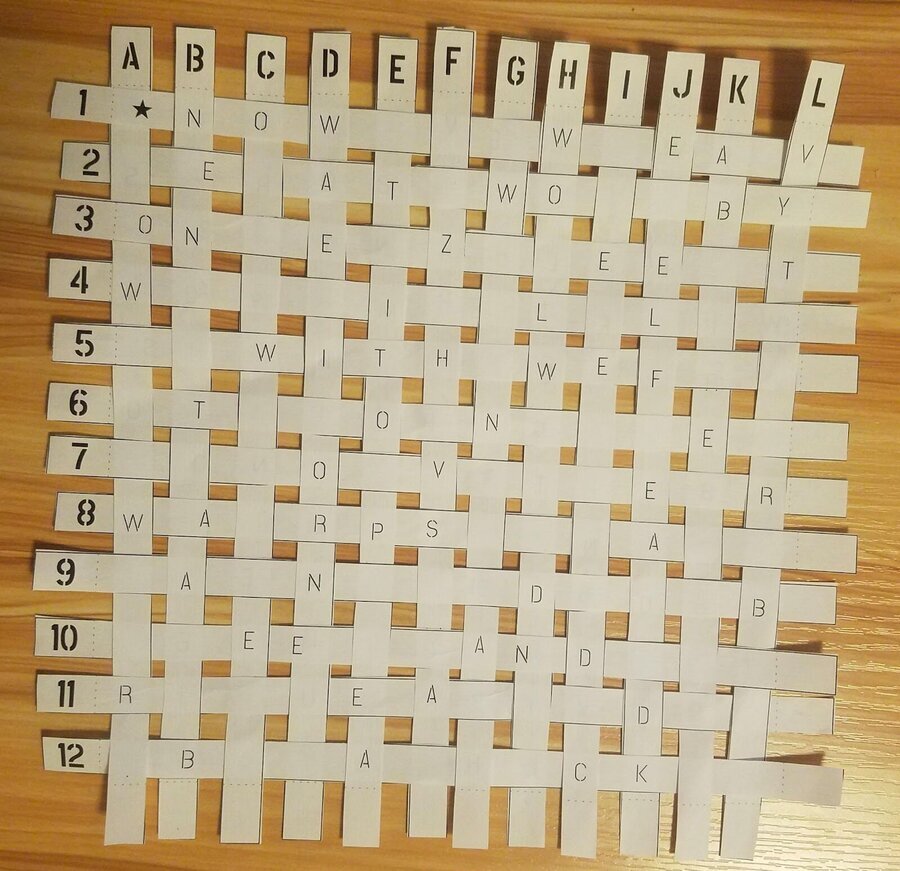
Reading the front:
NOW WEAVE A TWO BY ONE ZEE TWILL WITH WEFT ONE OVER WARPS A AND BEE AND READ BACK
Step 2: Twill weave
In weaving, "warp" is the vertical thread, and "weft" is the horizontal thread. A Z-twill is a particular kind of weaving pattern we should look up. In a 2/1 twill, the weft goes over 2 warps, under 1, over 2, under 1, etc. Z-twill gives the direction of how to offset the next weft.
The instructions say that weft 1 should go over warps A+B, under C, over D+E, under F, etc.
Thus we weave a 2/1 Z-Twill weave with weft 1 (the first row) going under warp C (the third column).
As the instructions say, we flip the weave over to read the next step: (note: the image is the mirror of Z-Twill diagrams because we’re looking at the back.)
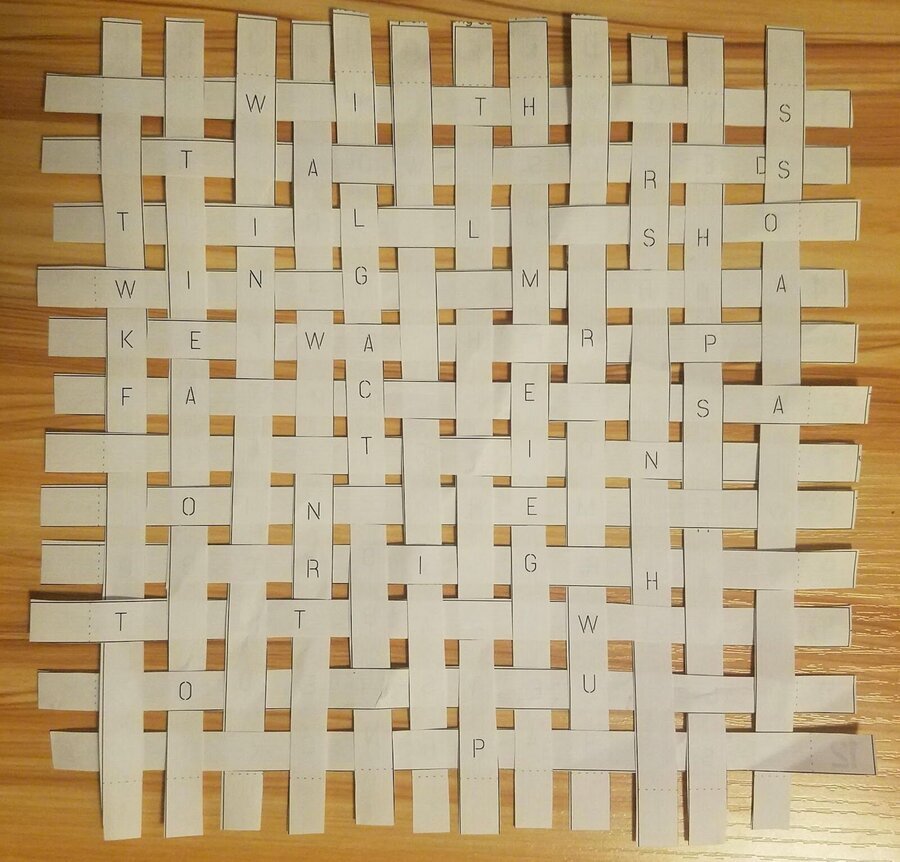
Reading the back:
WITH STAR STILL SHOWING MAKE WARP FACE SATIN ONE RIGHT TWO UP
Step 3: Satin weave
There are a few different types of satin weaves, but of the common ones (4HS, 5HS, and 8HS), 5HS is the most common and is also the only common satin weave going 1 right, 2 up. Warp-face means that on the frontside, the warps go 4 over 1 under and the wefts go 1 over 4 under. This has the characteristic look of a knight's chess move.
Do the above, such that the star appears on the front side, then flip over to read the back.
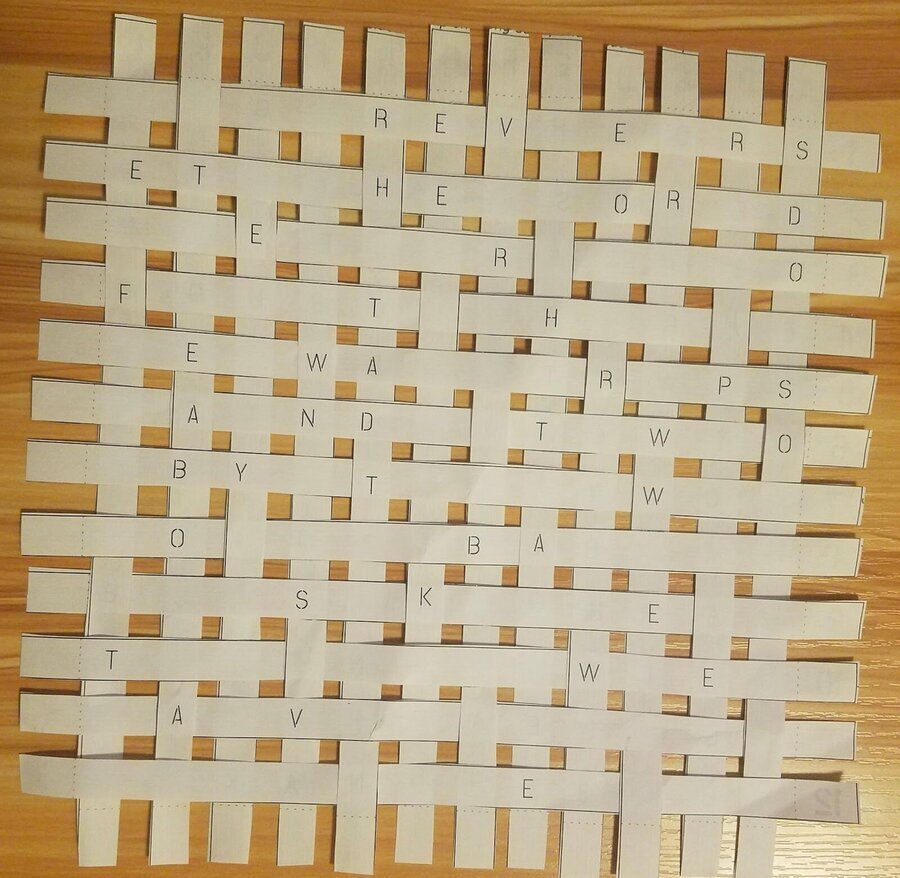
Reading the back:
REVERSE THE ORDER OF WARPS AND TWO BY TWO BASKET WEAVE
Step 4: Basket weave
Reverse the warps so that they go L-A from left to right (instead of A-L) and then do a basket weave.
A basket weave is like a plain weave, but strips go over and under in pairs.
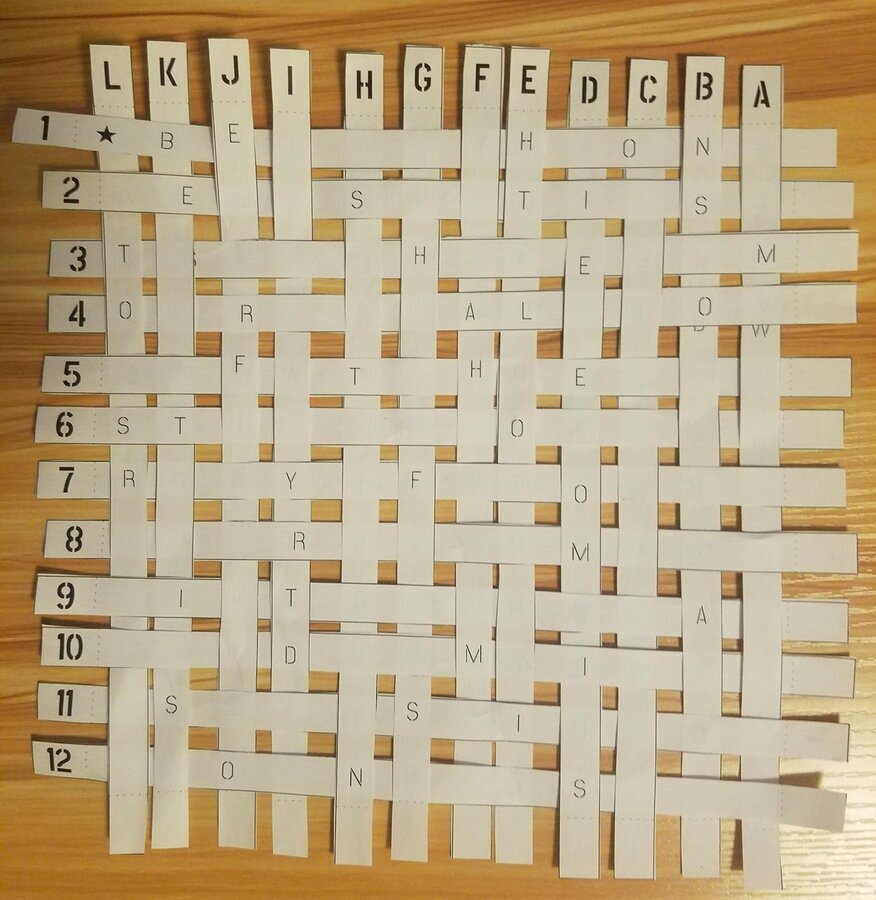
Reading the front:
BE HONEST IS THE MORAL OF THE STORY FOR MIT ADMISSIONS
Step 5: Putting the weave underwater
If we search for this phrase, we’ll find the following advice on MIT Admissions:
Not sure what you want to study yet? Rest assured that approximately half of our students ultimately major in something entirely different from what they wrote on their application, so we couldn’t use this data to predict anything even if we wanted to. Moral of the story: neither writing “theoretical nuclear intergalactic business physics” nor “underwater basket weaving” will give you an edge in the admissions process, so just be honest!
This hints that we should place the weave underwater, which reveals a separate message. Note that in the actual physical puzzle, part of the white paint becomes transparent, revealing symbols in white. In the images below, however, we show these printed in black.
PLAIN WEAVE BASKET WITH H4BIL3 ON WARPS AND 8A5KE7 ON WEFTS BOUND WITH C6 D1 F9 RING WALLS
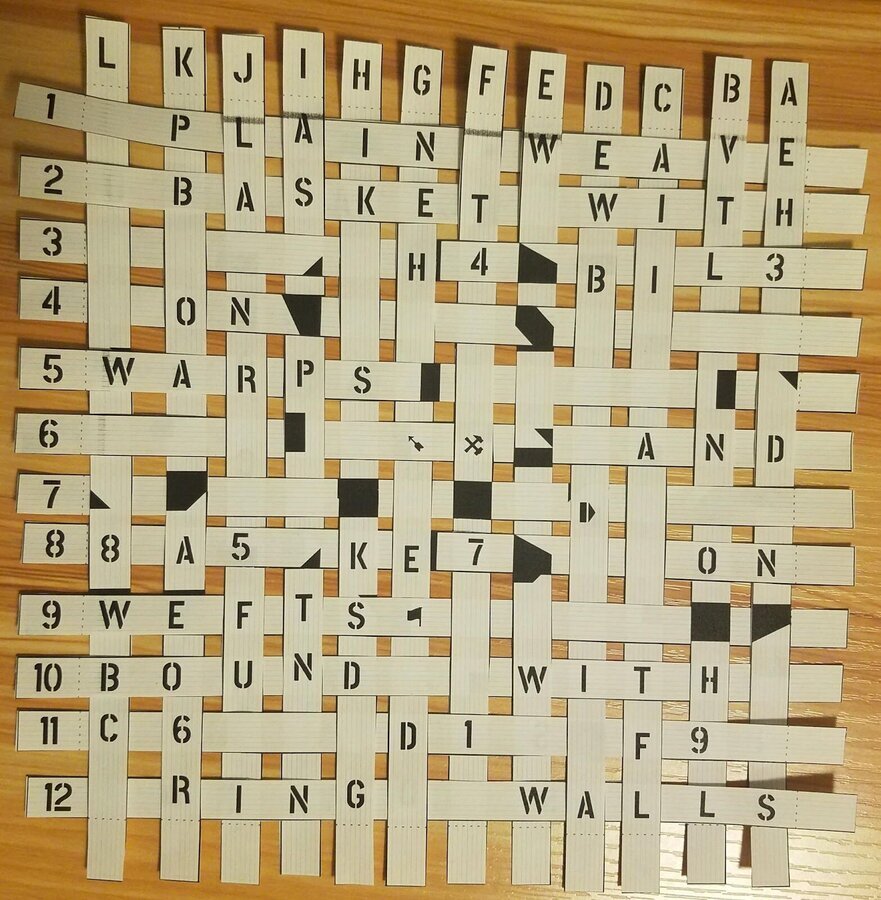
Step 6: Weaving a basket
We now want to weave a basket. We should be using the strips in H4BIL3, 8A5KE7, C6, D1, and F9. As confirmation, the remaining 6 strips (2, 10, 11, 12, G, J) all say DISCARD.
The base is formed by putting strips H4BIL3 as the warp columns and 8A5KE7 as the weft rows into a plain weave to make the pattern show.
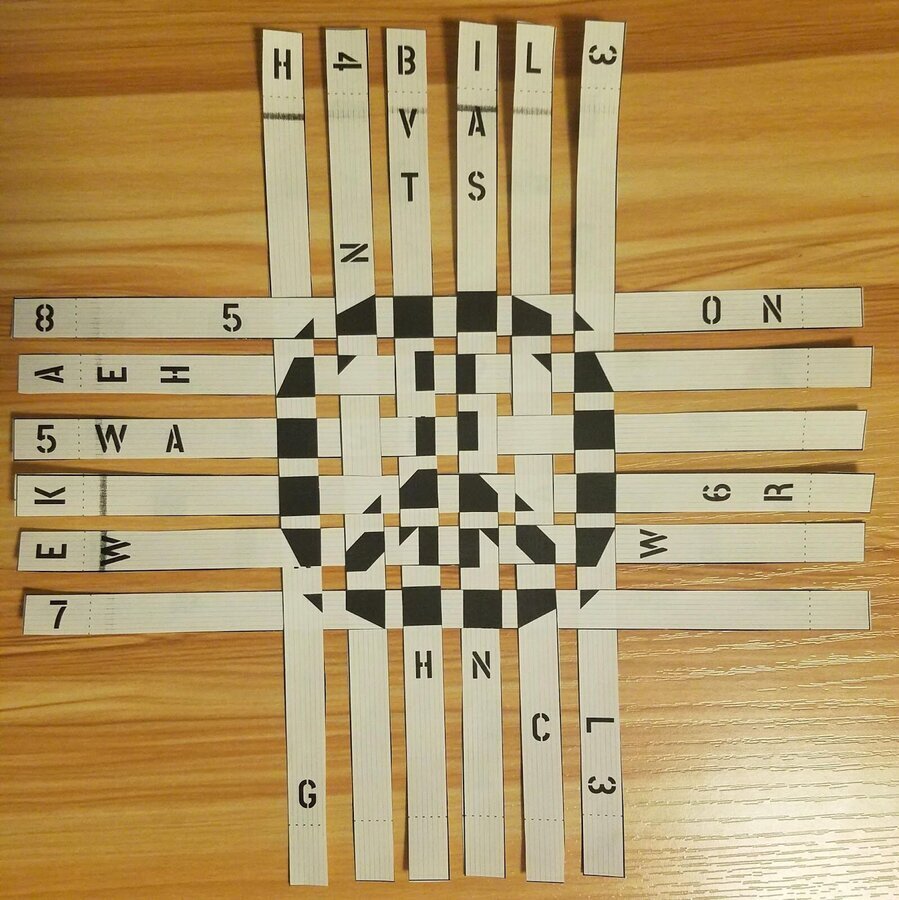
This forms a peace sign on the base. The ends of the strips can be folded up to form spokes for the basket. We form walls by using strips C6, D1, and F9 for each layer going bottom up. Exact positioning for the ring strips is determined by lining up 6 symbols that appear twice so that they face each other.
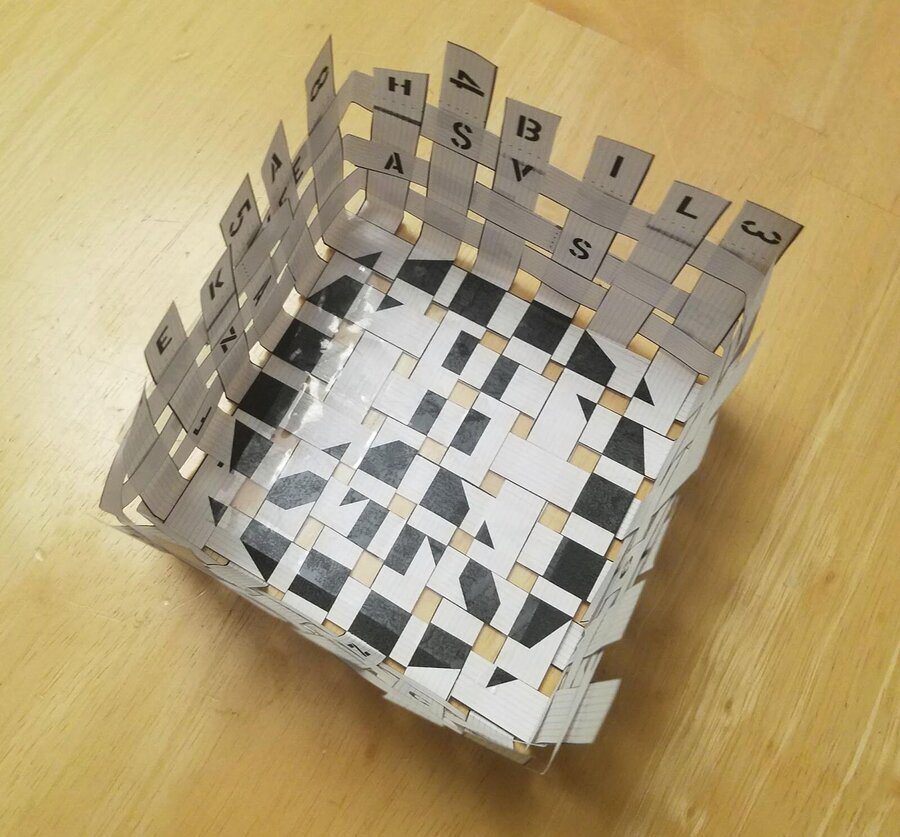
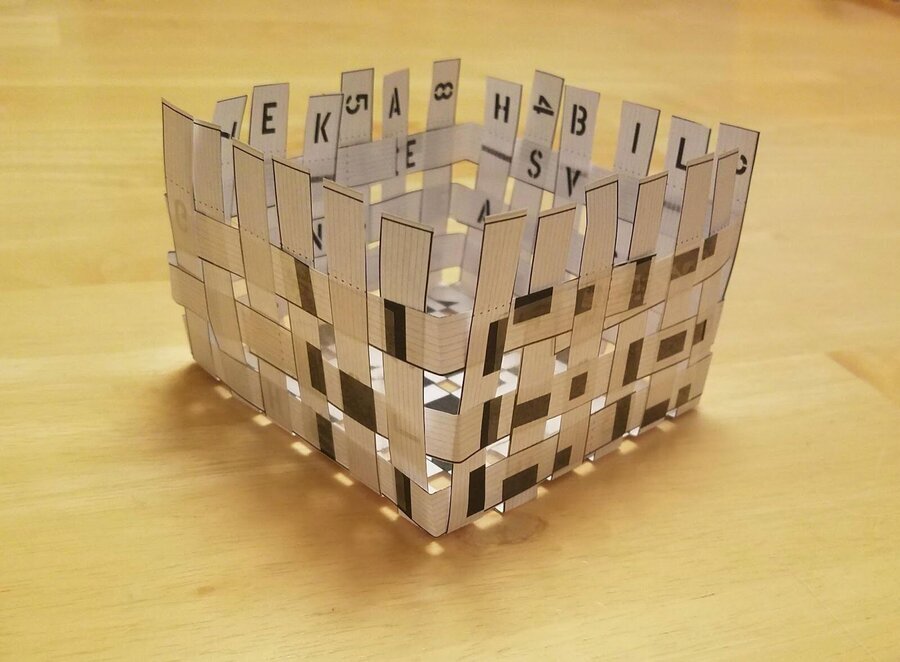
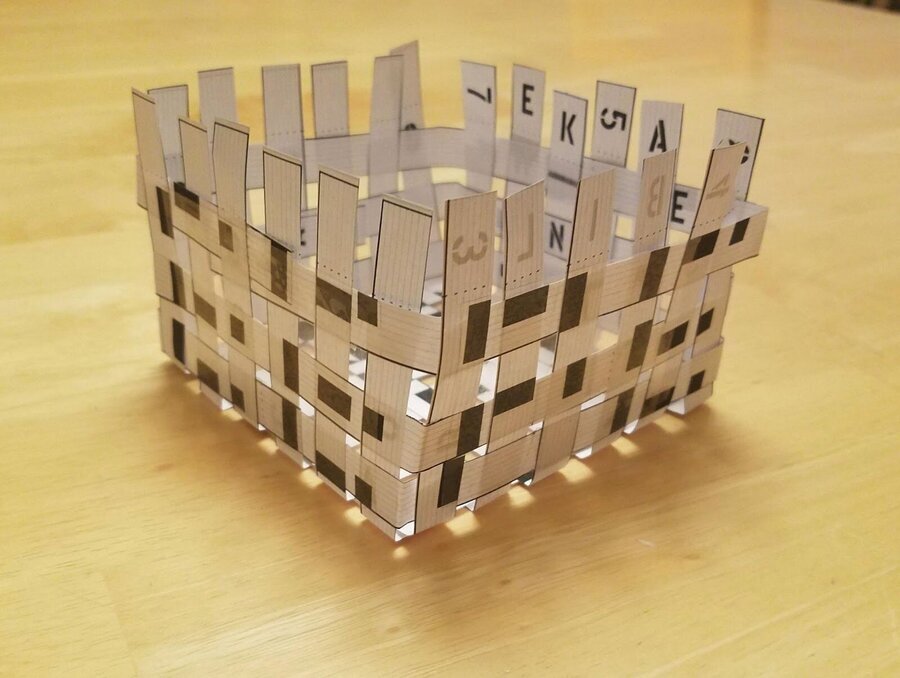
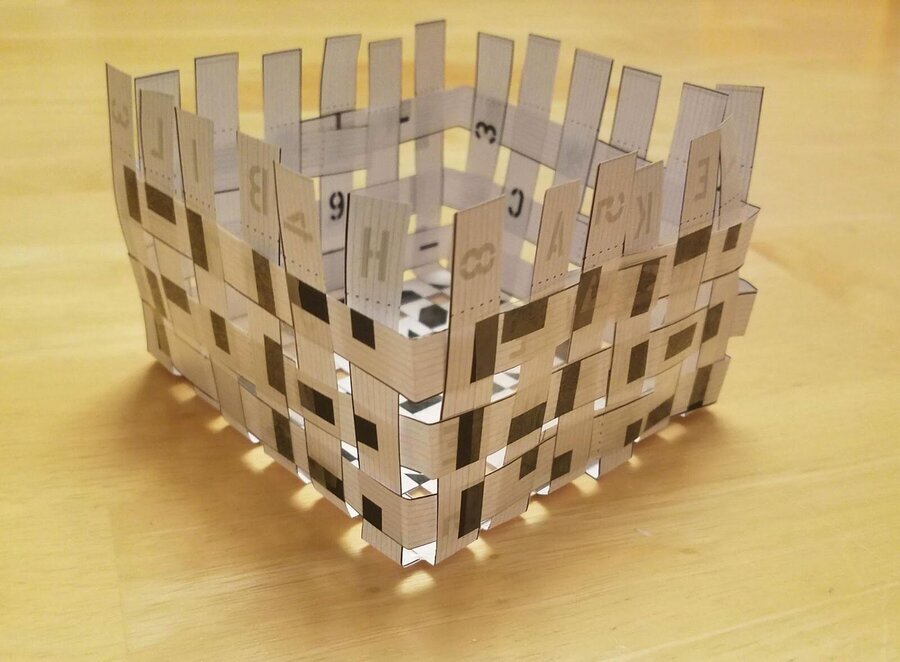
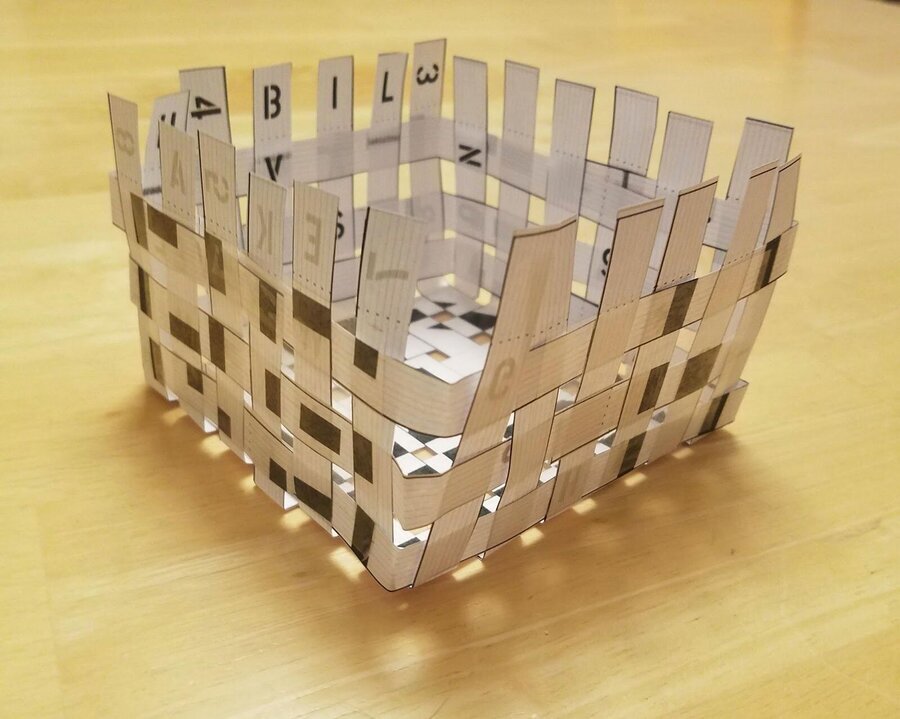
Upon finishing weaving the ring strips through the spokes, we get a basket with the inside being a PEACE symbol and the outside reading KEEPERS. Thus we have woven a basket extracting to PEACEKEEPERS. (Technically, the basket could be inside-out, but would still extract to the same answer.)
Authors' Notes
This puzzle was entirely started from the idea of underwater basket weaving. In the end, it was the puzzle that took the second-most person-hours (if you count dev time for Conjuri's Quest game as part of the Conjuri's Request meta). The production step alone took about 1 person-hour total per team at peak efficiency. In all, we produced 83 sets of 24 reeds each, for a total of nearly 2000 reeds!
Paint was applied in 3 layers: a disappearing hydrochromic ink which is white when dry but transparent when wet, white ink, and black ink. We experimented with a few different ways to apply the ink before settling on airbrushing inks through custom stencils.
Overall, we got to experience producing these as an assembly line, or as we deemed it, working in The Puzzle Factory!

